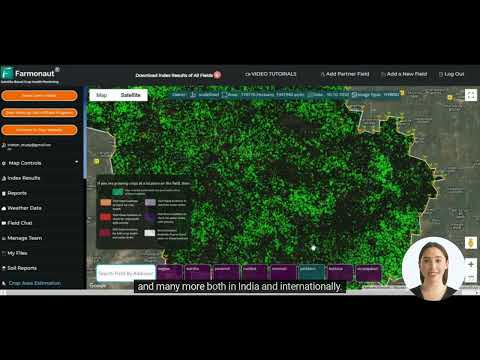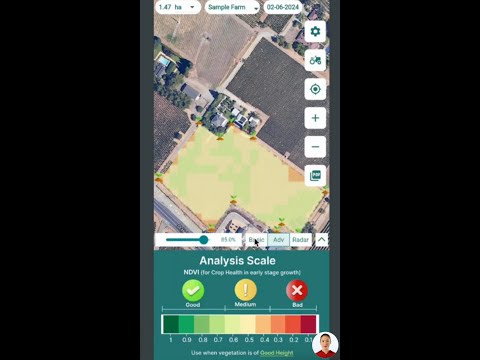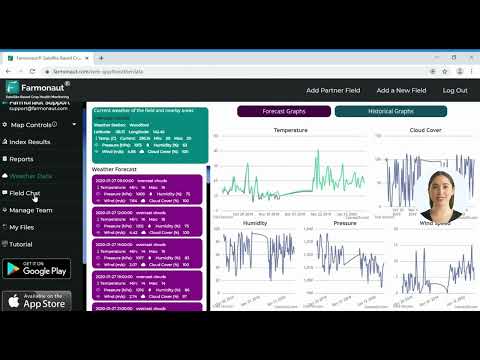February 2025 Fertilizer Price Update: Urea, UAN32, and UAN28 See Significant Increases
“Urea prices surged by 9% in February 2025, marking the highest increase among fertilizers that month.”
Welcome to our comprehensive analysis of the latest fertilizer price trends for February 2025. As we delve into the current state of the agricultural input market, we’ll explore the significant changes in retail fertilizer costs and what they mean for farmers and industry professionals. Our team at Farmonaut is committed to providing you with the most up-to-date information to help you make informed decisions about your fertilizer purchases and application strategies.
In this blog post, we’ll break down the price fluctuations for various nutrients, with a particular focus on the notable increases seen in urea, UAN32, and UAN28. We’ll also examine the pricing trends for other essential fertilizers such as DAP, MAP, anhydrous ammonia, and potash. By the end of this article, you’ll have a clear understanding of the current fertilizer market landscape and how it might impact your agricultural operations.
Overview of February 2025 Fertilizer Price Changes
The second week of February 2025 has brought significant shifts in the fertilizer market. Let’s take a closer look at the key changes:
- Urea prices have surged by 9%, the highest increase among all fertilizers
- UAN32 and UAN28 have seen substantial rises of 7% and 5%, respectively
- DAP and MAP prices remain high, with MAP unchanged from last month
- Anhydrous ammonia costs show a slight uptick
- Potash fertilizer prices have experienced a minor decrease
These monthly fertilizer price changes offer valuable insights into the current state of the agricultural input market. As we analyze each nutrient in detail, we’ll provide you with the information you need to navigate these price fluctuations effectively.
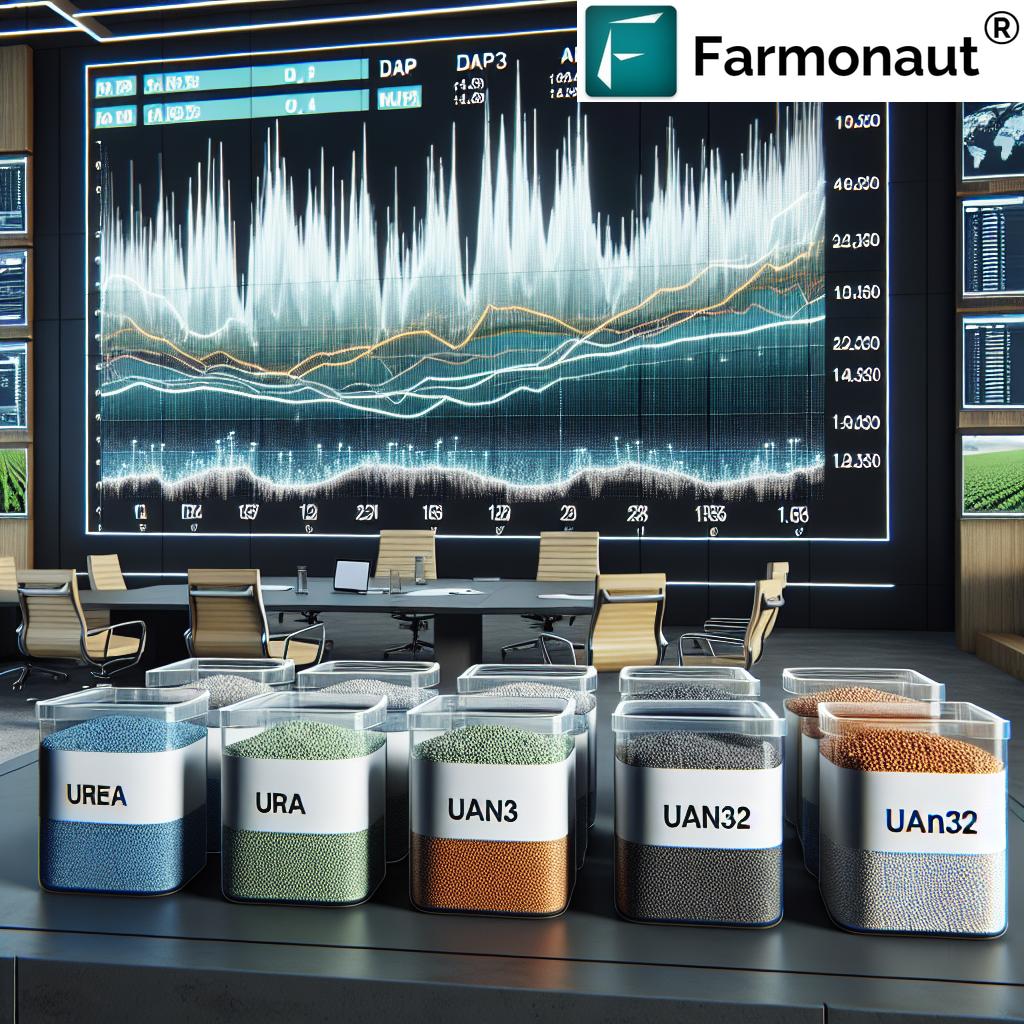
Detailed Analysis of Fertilizer Price Trends
Let’s dive deeper into the specific price changes for each fertilizer type and explore the factors influencing these shifts in the market.
Urea: A Significant Price Surge
Urea, a crucial nitrogen fertilizer, has experienced the most substantial price increase this month. With a 9% rise, the average price of urea now stands at $536 per ton. This significant jump in urea prices can be attributed to several factors:
- Increased global demand for nitrogen fertilizers
- Supply chain disruptions affecting production and distribution
- Rising energy costs, particularly natural gas, which is a key component in urea production
Farmers and agricultural professionals should be aware of this considerable price hike when planning their fertilizer purchases and application strategies for the coming growing season.
UAN32 and UAN28: Notable Price Increases
Liquid nitrogen solutions UAN32 and UAN28 have also seen significant price increases this month:
- UAN32 prices rose by 7%, reaching an average of $393 per ton
- UAN28 experienced a 5% increase, with an average price of $342 per ton
These price hikes in liquid nitrogen fertilizers reflect the overall trend in the nitrogen fertilizer market. The increases may be driven by similar factors affecting urea prices, including high demand and production costs.
DAP and MAP: Prices Remain High
Diammonium phosphate (DAP) and monoammonium phosphate (MAP) continue to maintain high price levels:
- DAP prices average $754 per ton, showing a slight increase from the previous month
- MAP prices remain unchanged at $809 per ton
The stability in MAP prices and the minor increase in DAP suggest that the phosphate fertilizer market is experiencing less volatility compared to nitrogen-based fertilizers. However, the consistently high prices of these nutrients may still present challenges for farmers in managing input costs.
Anhydrous Ammonia: Slight Uptick in Costs
Anhydrous ammonia, another important nitrogen fertilizer, has seen a modest price increase. The average price now stands at $747 per ton, reflecting a slight uptick from the previous month. This increase aligns with the overall trend in nitrogen fertilizer prices, although to a lesser extent than urea and UAN solutions.
Potash: Minor Decrease in Prices
In contrast to the rising prices of nitrogen-based fertilizers, potash has experienced a slight decrease in cost. The average price of potash now stands at $442 per ton, marking a minor reduction from last month. This decrease may provide some relief for farmers looking to balance their fertilizer expenses.
Implications for Farmers and Agricultural Professionals
The February 2025 fertilizer price update brings both challenges and opportunities for those in the agricultural sector. Here are some key implications to consider:
- Nitrogen fertilizer costs have risen significantly, potentially impacting profit margins for crops that require high nitrogen inputs
- The stability in phosphate fertilizer prices may allow for more predictable budgeting in this area
- The slight decrease in potash prices could provide an opportunity to optimize potassium application rates
- Farmers may need to reassess their fertilizer application strategies to maximize efficiency and minimize costs
- Consider exploring alternative nutrient sources or precision agriculture techniques to optimize fertilizer use
At Farmonaut, we understand the importance of staying informed about these market trends. Our satellite-based crop health monitoring and AI advisory system can help you make data-driven decisions about fertilizer application, potentially reducing costs and improving yields.
“UAN32 and UAN28 fertilizers experienced significant price hikes of 7% and 5% respectively in February 2025.”
Fertilizer Price Comparison Table
| Fertilizer Type | January 2025 Price ($/ton) | February 2025 Price ($/ton) | Percentage Change |
|---|---|---|---|
| Urea | 491 | 536 | +9% |
| UAN32 | 367 | 393 | +7% |
| UAN28 | 326 | 342 | +5% |
| DAP | 747 | 754 | +1% |
| MAP | 809 | 809 | 0% |
| Anhydrous Ammonia | 743 | 747 | +0.5% |
| Potash | 445 | 442 | -0.7% |
This table provides a clear overview of the price changes for each fertilizer type, allowing you to quickly compare costs and make informed decisions about your fertilizer purchases.
Strategies for Managing Fertilizer Costs
Given the current fertilizer price trends, it’s crucial for farmers and agricultural professionals to adopt strategies that can help manage costs effectively. Here are some approaches to consider:
- Soil Testing and Precision Application: Conduct regular soil tests to determine precise nutrient needs and avoid over-application of fertilizers.
- Variable Rate Technology: Utilize precision agriculture tools to apply fertilizers at variable rates across fields, optimizing nutrient use efficiency.
- Crop Rotation: Implement crop rotation strategies that can help balance nutrient requirements and potentially reduce fertilizer needs.
- Alternative Nutrient Sources: Explore organic fertilizers, cover crops, or other alternative nutrient sources that may be more cost-effective.
- Timing of Application: Optimize the timing of fertilizer applications to maximize nutrient uptake and minimize losses.
At Farmonaut, our satellite-based crop health monitoring system can assist you in implementing these strategies more effectively. By providing real-time data on crop health and soil conditions, we help you make informed decisions about fertilizer application timing and rates.
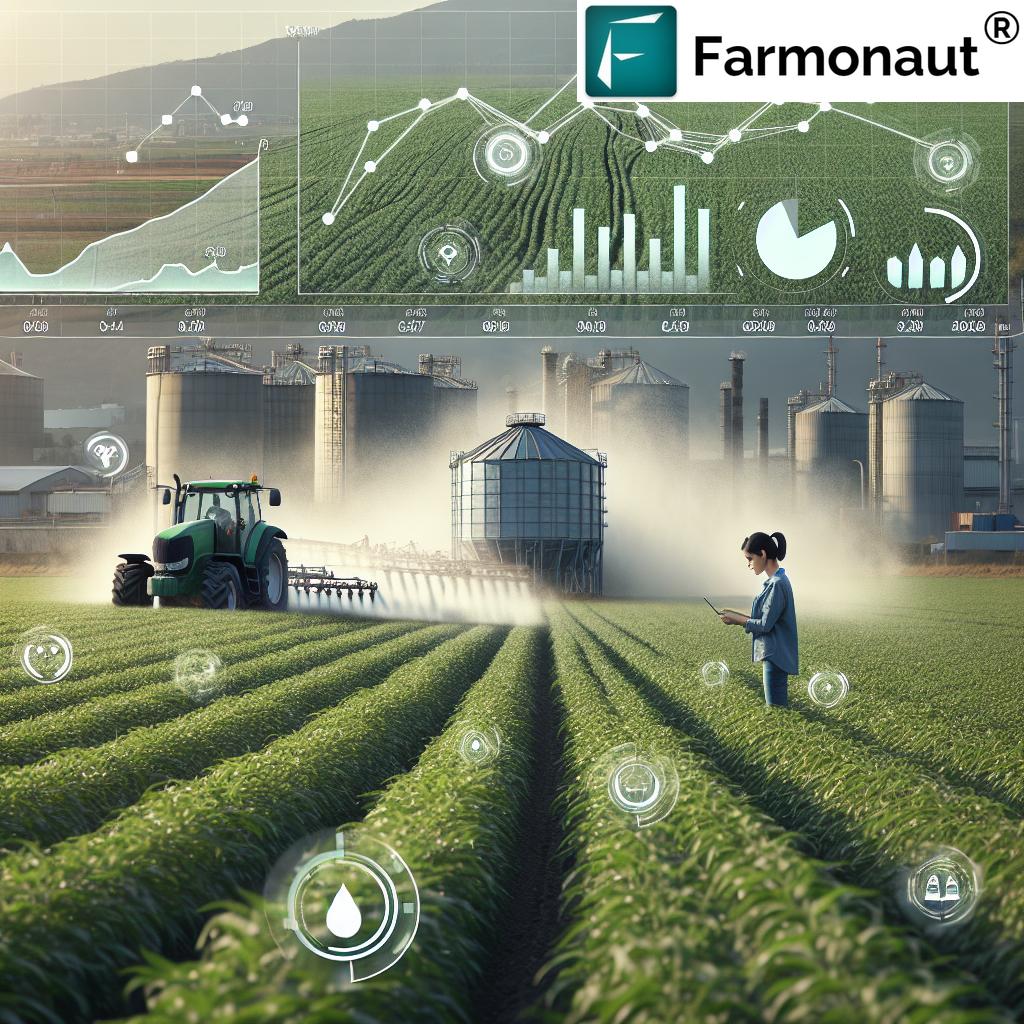
The Role of Technology in Optimizing Fertilizer Use
As fertilizer prices continue to fluctuate, the importance of technology in agriculture becomes increasingly evident. Advanced tools and platforms can help farmers optimize their fertilizer use, potentially reducing costs and improving yields. Here’s how technology is making a difference:
- Satellite-Based Crop Monitoring: Platforms like Farmonaut use satellite imagery to provide real-time insights into crop health, allowing for more precise fertilizer application.
- AI-Powered Advisory Systems: Artificial intelligence can analyze various data points to provide personalized recommendations for fertilizer use.
- IoT Sensors: Internet of Things (IoT) devices can monitor soil moisture and nutrient levels in real-time, enabling more accurate fertilizer application.
- Precision Application Equipment: Advanced machinery can apply fertilizers with high precision, reducing waste and optimizing nutrient distribution.
By leveraging these technologies, farmers can make data-driven decisions about their fertilizer use, potentially mitigating the impact of rising prices.
Global Factors Influencing Fertilizer Prices
To fully understand the current fertilizer price trends, it’s essential to consider the global factors that influence these prices. Several key elements are contributing to the price fluctuations we’re seeing in February 2025:
- Energy Costs: The price of natural gas, a key component in fertilizer production, significantly impacts fertilizer costs.
- Global Demand: Increasing food production needs worldwide drive up demand for fertilizers.
- Supply Chain Disruptions: Ongoing challenges in global supply chains can affect fertilizer production and distribution.
- Environmental Regulations: Stricter environmental policies in some regions may impact fertilizer production and pricing.
- Currency Exchange Rates: Fluctuations in currency values can affect the cost of importing and exporting fertilizers.
Understanding these global factors can help farmers and agricultural professionals anticipate potential price changes and plan accordingly.
Long-Term Outlook for Fertilizer Prices
While short-term price fluctuations are important to monitor, it’s also crucial to consider the long-term outlook for fertilizer prices. Based on current trends and expert analyses, here are some projections for the future of fertilizer pricing:
- Continued volatility in nitrogen fertilizer prices due to energy cost fluctuations
- Potential stabilization of phosphate and potash prices as new production capacities come online
- Increasing emphasis on sustainable and bio-based fertilizers, which may impact traditional fertilizer markets
- Growing demand from emerging economies could put upward pressure on global fertilizer prices
- Technological advancements in fertilizer production may help moderate price increases in the long term
While these projections provide a general outlook, it’s important to remember that the fertilizer market can be influenced by many unpredictable factors. Staying informed and adaptable will be key for agricultural professionals navigating these market dynamics.
How Farmonaut Can Help You Navigate Fertilizer Price Changes
At Farmonaut, we understand the challenges that fluctuating fertilizer prices pose for farmers and agricultural professionals. Our advanced satellite-based farm management solutions are designed to help you optimize your fertilizer use and manage costs effectively. Here’s how our platform can assist you:
- Real-Time Crop Health Monitoring: Our satellite imagery provides up-to-date information on crop health, allowing you to identify areas that may require more or less fertilizer.
- AI-Powered Advisory: Our Jeevn AI system analyzes various data points to provide personalized recommendations for fertilizer application, helping you maximize efficiency.
- Resource Management Tools: Our platform includes features to help you track and optimize your fertilizer usage across your entire operation.
- Weather Forecasting: Accurate weather predictions can help you time your fertilizer applications for maximum effectiveness and minimal waste.
By leveraging these tools, you can make data-driven decisions about your fertilizer use, potentially reducing costs while maintaining or even improving crop yields.
Explore Farmonaut’s solutions:
Conclusion: Adapting to the Changing Fertilizer Market
The February 2025 fertilizer price update highlights the ongoing volatility in the agricultural input market. With significant increases in urea, UAN32, and UAN28 prices, farmers and agricultural professionals face new challenges in managing their fertilizer costs. However, by staying informed, adopting efficient practices, and leveraging technology, it’s possible to navigate these price fluctuations effectively.
Remember, the key to success in this changing landscape is adaptability and informed decision-making. By utilizing tools like Farmonaut’s satellite-based crop monitoring and AI advisory systems, you can optimize your fertilizer use, potentially reducing costs while maintaining productivity.
Stay tuned for our next monthly update, where we’ll continue to provide you with the latest insights and analysis on fertilizer price trends. In the meantime, explore how Farmonaut can help you make the most of your agricultural inputs in these challenging times.
FAQ Section
Q: How often do fertilizer prices typically change?
A: Fertilizer prices can fluctuate monthly or even weekly, depending on various factors such as energy costs, global demand, and supply chain conditions. It’s important to regularly monitor price trends for accurate budgeting and planning.
Q: Are there any alternatives to traditional fertilizers that might be more cost-effective?
A: Yes, alternatives include organic fertilizers, cover crops, and precision agriculture techniques that optimize nutrient use. These methods can sometimes be more cost-effective and environmentally friendly, depending on your specific agricultural needs.
Q: How can I determine the right amount of fertilizer to use on my crops?
A: The right amount of fertilizer depends on various factors, including soil type, crop requirements, and current soil nutrient levels. Conducting regular soil tests and using precision agriculture tools like those offered by Farmonaut can help you determine optimal fertilizer application rates.
Q: Will fertilizer prices continue to rise in the coming months?
A: While it’s difficult to predict future prices with certainty, current trends and global factors suggest that fertilizer prices may continue to experience some volatility. It’s best to stay informed about market trends and plan accordingly.
Q: How can technology help me manage fertilizer costs?
A: Technology like satellite-based crop monitoring, AI advisory systems, and precision application equipment can help optimize fertilizer use by providing accurate data on crop health and nutrient needs. This can lead to more efficient fertilizer application and potentially lower costs.
Earn With Farmonaut: Affiliate Program
Earn 20% recurring commission with Farmonaut’s affiliate program by sharing your promo code and helping farmers save 10%. Onboard 10 Elite farmers monthly to earn a minimum of $148,000 annually—start now and grow your income!
For more information on our satellite and weather API services, visit our API page or check out our API Developer Docs.
